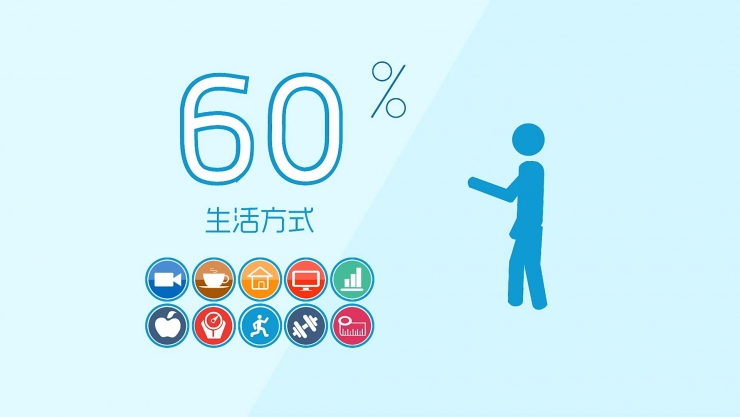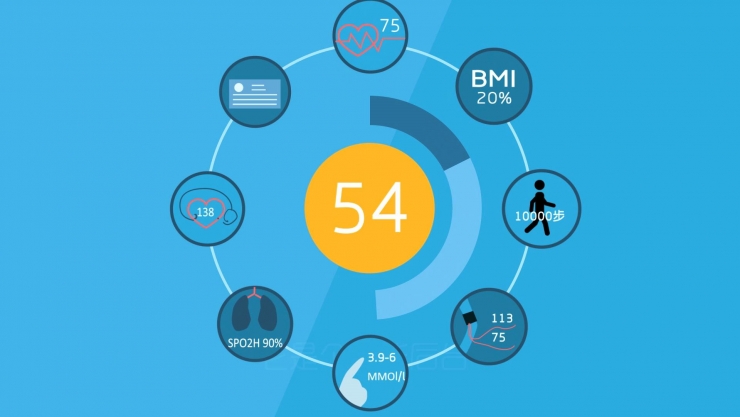In June 2016, a health management carrier carrying unlimited creative thinking and unlimited imagination set off a grand launch. Miao Health officially released the “Miracle Planet Project†that focuses on building the ecological chain of the big health industry. Good Health CEO Kong Fei said in an interview with Life Times reporter Li Yang that the biggest attraction of the plan is to eliminate the communication costs and data barriers among industries, call for partners in different fields to enter, share more data, and collect More resources, collide with more ideas, create more business opportunities, and truly realize the value creation in the Internet health field. Wonderful health introduction video please poke

"Life Times": The Miao Planet Project is an open and healthy Internet eco-chain that enables partners to mutually benefit each other. In the entire ecological chain, Miao Health will collaborate with Sanbao Group's large-scale consumption, health, and financial strategic resources, and jointly build smart health devices such as smart wearable devices, insurance, medical examinations, and medical services. Why did you have the idea of ​​implementing the "big health industry eco-chain plan"?
Kong Fei: We observed that there are many companies that focus on data in the market. However, most of the companies that do the same are e-commerce platforms. The e-commerce platform is very concerned about transaction data. These trading data, everyone is already familiar with, before many Internet companies specialize in doing e-commerce transaction data, such as today I bought a refrigerator, or bought a hair dryer a month later, there are many people used to 5 in each month No. 10 or No. 10 shopping, the platform will specifically try to do transaction data mining for these consumers' buying habits, inducing consumers to continue purchasing. In contrast, the correlation between e-commerce transaction data is actually not very strong. On the contrary, the correlation between health data is much stronger. For example, a person's movement, blood pressure, blood glucose and other data are more horizontally related. From the time axis, the correlation between these data is also very close. However, in the current health field, there are more products in the vertical field and only one dimension of data, but few people are concerned about the horizontal correlation of multiple products and data in multiple dimensions. Therefore, we believe that only giving clients a health plan from vertical areas may not be scientific enough. Therefore, Miao Health hopes to create an ecosystem that can relate to each dimension, so that healthy data can be connected in different dimensions and different segments.
Life Times: So, is Miao Health helping everyone analyze these horizontal data?
Kong Fei: Yes, we help customers comprehensively analyze all health data, including wearable devices, physical examination reports, and all the data that records your physical signs. Include long-term observations of the dynamic changes in these data and provide dynamic solutions at any time. Nowadays people are very keen on sports. It is also popular to use sports software to “scratch stepsâ€. This software may indeed encourage you to do sports, but has one’s health status improved or improved? , it is difficult to understand through the "step number" dimension data. If we combine exercise with indicators such as cardiopulmonary function, more scientific exercise can be achieved and the effect of exercise can be more macroscopic. Based on these ideas, we believe that China needs an integrated health management platform to make good use of these horizontal data, and ultimately provide customers with more accurate and more personalized health management solutions.

"Life Times": Where does health data come from? Who will ensure the scientific nature of these data analyses?
Kong Fei: At present, there are four main sources of good health and health data. One is physical examination data, the other is medical data, third is app background data, and fourth is wearable device data. These four types of data basically constitute one person's completed health data. We have three professional teams to ensure that the data analysis is professional and scientific. First, we have a medical and health department, and there are full-time doctors in different fields such as chronic diseases, psychology, nutrition, sports medicine; Experts formed a powerful team of consultants. Third, we cooperated with international companies with solutions for advanced health problems. They have relatively mature and advanced health data algorithms.
"Life Times": At the conference, Miao Health released a new algorithm named "Health Behavior Index (M-Value)", which will manage the health behavior of users through M-values. This is to promote the "unification of knowledge and action". One of the effective ways. How to understand this "M" value?
Kong Fei: Our concept of “M†value is not a health index. It is more about an index of healthy behavior. It can be used to make an intuitive score on our own health behavior and quantify it. Studies have shown that lifestyle accounts for 60% of the many factors that affect health. If your lifestyle is healthy and health behavior is correct, then the "M" value is relatively higher. For example, today your "M" deserves a high score. It shows that your lifestyle is healthier and more scientific. If the score is low, it means that your lifestyle is "dangerous" and you need to pay attention. The "M" value is also one of our core competencies. Our core competencies mainly include three points. One is the access capability of wearable devices and medical services. The second is to provide users with the algorithmic capabilities of health solutions based on these data. Third, we can eventually turn these complex algorithms into The user can easily understand the “M†value, and then use the gamification method to run this “M†value to promote the change of everyone’s healthy behavior.

"Life Times": For example, what are the interesting means?
Kong Fei: In the past, the traditional model of health management was to conduct health education before changing health behavior. We try to break this order and start with changing health behaviors. We must focus on healthy behavior management. For example, we should promote ways of improving people’s behavior through games and rewards. We should try to make users willing to participate and directly generate action, but at the same time assist them Some spread of health knowledge. We try to make the way to change healthy behavior interesting and interesting. For example, we may set up some "smile" tasks, letting you wake up every morning after the first task is to smile at the mirror, and so on. For example, in order to manage the user's blood pressure, we set up a building block game to allow the user to take blood pressure every day. If the blood pressure is normal, give you a rectangular block. If something is not normal, give you a diamond block. If it is not normal, give it to you. Pentagonal building blocks. As the shape of building blocks gets more and more bizarre, it becomes more and more difficult for you to build blocks. Our purpose is to promote people to ensure normal blood pressure. If you have normal blood pressure for 30 days, then the building blocks can be set up 30 layers, and the control pressure results are obvious.
"Life Times": Miao Health website has a slogan, "Reshaping the concept of personal health management." How do you understand personal health management?
Kong Fei: Just now, health management is divided into many steps. The first step is health education, so that more people understand health knowledge. The more health knowledge you know, the more help you will have to change your lifestyle. However, the main problem is that health management often stops at the first step. People understand many health knowledge through websites, televisions, and newspapers. We tell people how to eat, how to sleep, and how to exercise through health education, and tell everyone how to do it right. . But what's more important next is the second step. Did you do it? Did you follow the requirements? Is it good or bad? In the past, we lacked effective monitoring methods. We were not able to rely on the Internet of Things and the development of science and technology was inadequate. There is no current wearable device, including medical examination information and medical information are all isolated islands of information. In the absence of such data, health management can only be in the stage of health education, and it cannot guarantee the implementation of the concept of health, and it cannot guarantee the change of behavior from “knowledge†to “behaviorâ€. Previous health management can only be said to be health education. We want to do "version 2.0" of health management, truly manage the health of every user, and improve the health of individuals through behavioral interventions.

Life Times: Are you going to make some changes in the normal steps of health management?
Kong Fei: Sometimes it is important to change our thinking. I think that there should be a cycle between "know-believe-go" and you can cut it in from any one entry point. For example, a company abroad has been equipped with a gym to improve the health of its employees, but few people have found it. Later, the health management company provided a new plan for the company, renting a parking lot 1 km from the company. Staff can park for free. Originally, companies had to charge for parking, and many employees would walk to this free parking lot to take a daily 2 km walk to work. This program is better than the gym and employees' health behavior has been effectively changed.
"Life Times": Do you know what experience foreign countries have in health management?
Kong Fei: Although China has already started many years of health management, the gap with foreign countries is still relatively large. In foreign countries, health management, hospitals, and insurance are all included in a company. Health management services can improve health. Hospitals can easily access hospitals through green channels. Insurance can be used to protect the ability to pay for medical treatment. From the user's point of view, it is accepted. The health management service is more comprehensive. However, due to institutional and other reasons, these services are currently being fragmented in the country. Now this era needs to try to open up it.
"Life Times": What is the latest progress of the "big health industry eco-chain project"?
Kong Fei: In terms of operations, we are currently focusing on rapidly expanding users and increasing contact with partners, including insurance, medical examinations, and employee benefits. We hope to access resources on a large scale, import more data such as wearable devices and medical examination reports, maximize the sharing of data and resources, and maximize value.
Article reprinted from Life Times reporter Li Yang